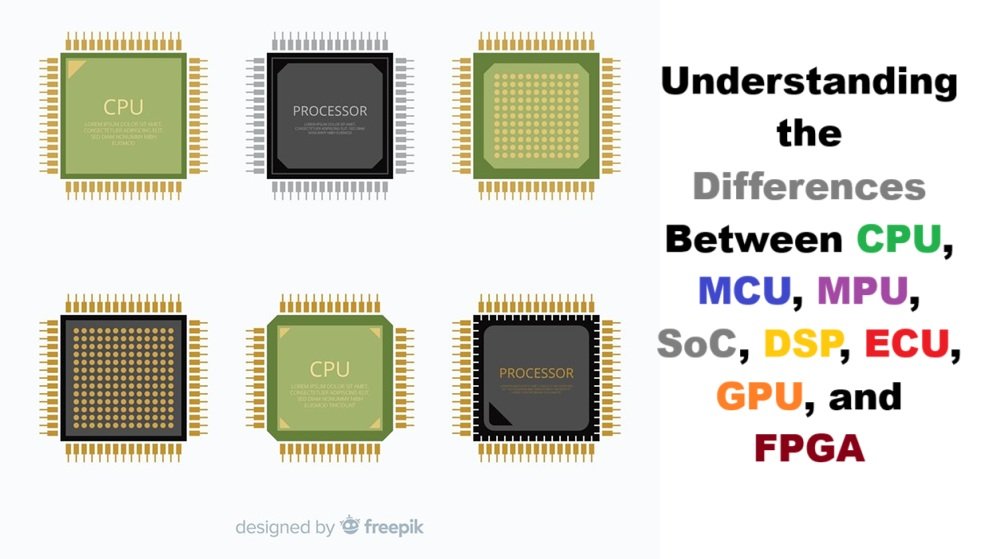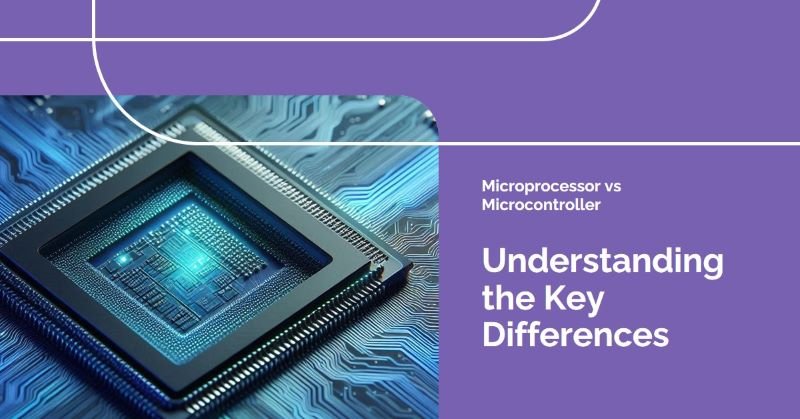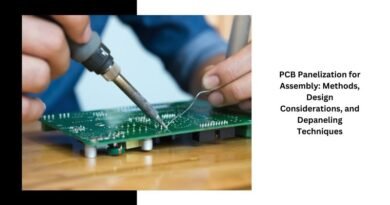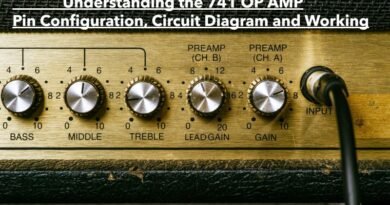Understanding the Differences Between CPU, MCU, MPU, SoC, DSP, ECU, GPU, and FPGA
In the world of embedded systems, computing, and electronics, there is a broad range of processing units and components that perform different roles depending on application and design needs. Understanding these components — CPU, MCU, MPU, SoC, DSP, ECU, GPU, and FPGA — is crucial for engineers, developers, and tech enthusiasts alike. While they may seem similar on the surface, each has a unique architecture, use case, and functionality.
Let’s delve into the characteristics, differences, and use cases of each of these components.
1. Central Processing Unit (CPU)
Definition
The CPU is the core processing unit of a computer system. Often referred to as the “brain of the computer”, it performs arithmetic and logical operations, controls instructions, and manages system resources.
Key Characteristics
- General-purpose processing unit
- Executes operating system and applications
- Can have multiple cores (dual-core, quad-core, etc.)
- High clock speeds (GHz range)
- Works with RAM, cache, and I/O devices
Use Cases
- Desktops and laptops
- Servers
- Workstations
Example CPUs
- Intel Core i7
- AMD Ryzen
- Apple M-series (used in hybrid SoC form)
2. Microcontroller Unit (MCU)
Definition
An MCU is a compact integrated circuit designed to govern a specific operation in an embedded system. It typically combines a CPU with memory (RAM, ROM/Flash) and peripherals on a single chip.
Key Characteristics
- Single-chip solution
- Real-time performance
- Lower clock speeds
- Low power consumption
- Limited memory and processing power
Use Cases
- Embedded systems
- IoT devices
- Home appliances
- Automotive systems
Popular MCUs
- Atmel ATmega328 (Arduino Uno)
- STM32F series
- ESP32 (Wi-Fi + MCU)
3. Microprocessor Unit (MPU)
Definition
An MPU is a general-purpose processor that does not have built-in RAM, ROM, or peripherals. It requires external components and is more powerful than an MCU.
Key Characteristics
- High performance
- External memory and peripheral interfaces
- Can run operating systems (Linux, Android)
- Higher power consumption than MCU
Use Cases
- Industrial controllers
- Human-Machine Interfaces (HMI)
- Robotics and automation
- High-end embedded systems
Examples
- ARM Cortex-A series
- Intel Atom
- NXP i.MX series
4. System on Chip (SoC)
Definition
An SoC integrates all major components of a computing system into a single chip: CPU, GPU, memory, I/O controllers, and sometimes MCUs, DSPs, and AI accelerators.
Key Characteristics
- All-in-one solution
- Power-efficient
- Compact form factor
- Often based on ARM architecture
- Used in mobile and embedded devices
Use Cases
- Smartphones and tablets
- Smart TVs
- Wearables
- Raspberry Pi boards
- Automotive infotainment systems
Popular SoCs
- Qualcomm Snapdragon
- Apple A-series (e.g., A17 Bionic)
- Broadcom BCM2837 (used in Raspberry Pi 3)
5. Digital Signal Processor (DSP)
Definition
A DSP is a specialized microprocessor optimized for real-time digital signal processing such as filtering, audio/video encoding, and communications.
Key Characteristics
- Handles mathematical operations efficiently (e.g., FFT, convolution)
- High throughput
- Often used with fixed-point or floating-point arithmetic
- Low latency
Use Cases
- Audio processing (e.g., noise cancellation)
- Image/video compression
- Modems and communication systems
- Radar and sonar systems
Examples
- Texas Instruments TMS320 series
- Qualcomm Hexagon DSP
- Analog Devices SHARC
6. Electronic Control Unit (ECU)
Definition
An ECU is an embedded system in automotive electronics that controls specific functions in a vehicle. It typically consists of an MCU or MPU with specialized firmware.
Key Characteristics
- Application-specific embedded controller
- Real-time and safety-critical
- Communicates via CAN, LIN, FlexRay, or Ethernet
- Increasingly networked (centralized/zonal architectures)
Use Cases
- Engine Control Module (ECM)
- Transmission Control Unit (TCU)
- Anti-lock Braking System (ABS)
- Airbag controllers
- Advanced Driver Assistance Systems (ADAS)
Example Vendors
- Bosch, Continental, Denso, NXP
7. Graphics Processing Unit (GPU)
Definition
A GPU is a specialized processor originally designed to accelerate graphics rendering. Modern GPUs are also used for general-purpose parallel computing (GPGPU).
Key Characteristics
- Highly parallel architecture
- Thousands of cores
- Optimized for matrix and vector operations
- Essential for deep learning and 3D rendering
Use Cases
- Video games and rendering engines
- Machine learning (especially training)
- Scientific simulations
- Cryptocurrency mining
Popular GPUs
- NVIDIA GeForce/Quadro/Tesla
- AMD Radeon/Instinct
- Apple M-series Neural Engines
8. Field Programmable Gate Array (FPGA)
Definition
An FPGA is a semiconductor device that can be reprogrammed to perform specific logic functions. Unlike a CPU or GPU, FPGAs are not software-driven but rather hardware-programmable.
Key Characteristics
- Configurable logic blocks (CLBs)
- Parallel processing at hardware level
- Reconfigurable in the field
- Low latency and deterministic behavior
- Suitable for prototyping and custom logic
Use Cases
- High-frequency trading
- Digital signal processing
- Aerospace and defense
- Custom accelerators for AI
- Real-time industrial control
Popular FPGA Vendors
- Xilinx (now AMD)
- Intel (Altera)
- Lattice Semiconductor
Comparison Table
| Feature | CPU | MCU | MPU | SoC | DSP | ECU | GPU | FPGA |
|---|---|---|---|---|---|---|---|---|
| Target Use | General | Embedded | High-end Embedded | Mobile/Compact | Signal Processing | Automotive | Graphics/Compute | Custom Logic |
| Integrated RAM/Peripherals | No | Yes | No | Yes | Sometimes | Yes | No | No |
| Runs OS | Yes | Sometimes | Yes | Yes | No | Sometimes | Yes | No (But can host soft CPU) |
| Real-time | No | Yes | Sometimes | Sometimes | Yes | Yes | No | Yes |
| Power Efficiency | Medium | High | Medium | High | Medium | High | Medium to Low | Depends |
| Cost | High | Low | Medium | Varies | Medium | Varies | High | High |
Conclusion
Each of these processing components—CPU, MCU, MPU, SoC, DSP, ECU, GPU, and FPGA—serves a distinct purpose in the world of computing and embedded systems. While there’s some overlap in functionality, their design and optimization make them ideal for specific scenarios.
Understanding their differences helps engineers and developers select the right component based on performance, cost, power consumption, and scalability needs. Whether you’re building an IoT device with an MCU, processing real-time sensor data with a DSP, or accelerating AI models with a GPU or FPGA — the key is selecting the right tool for the right job.








